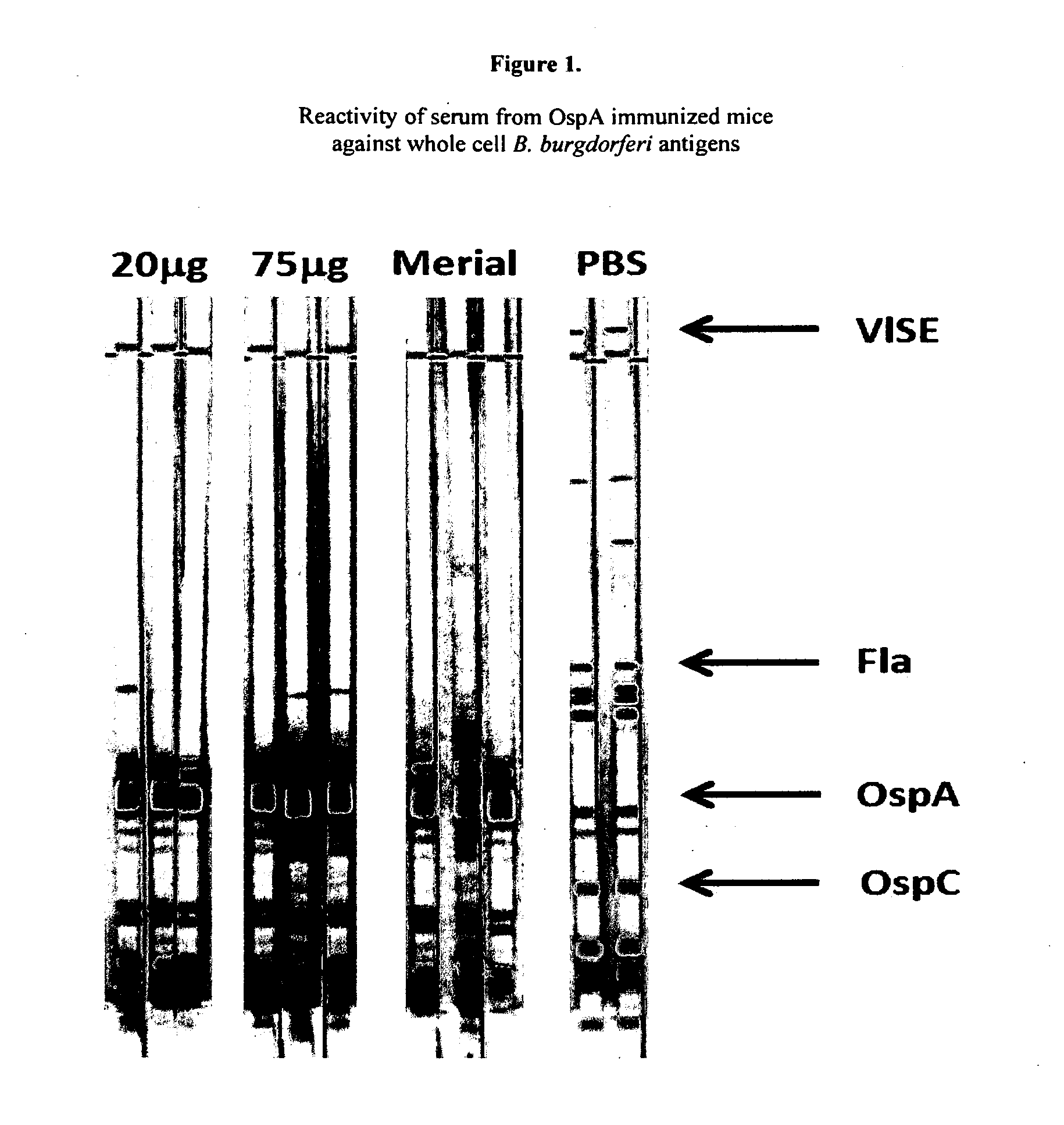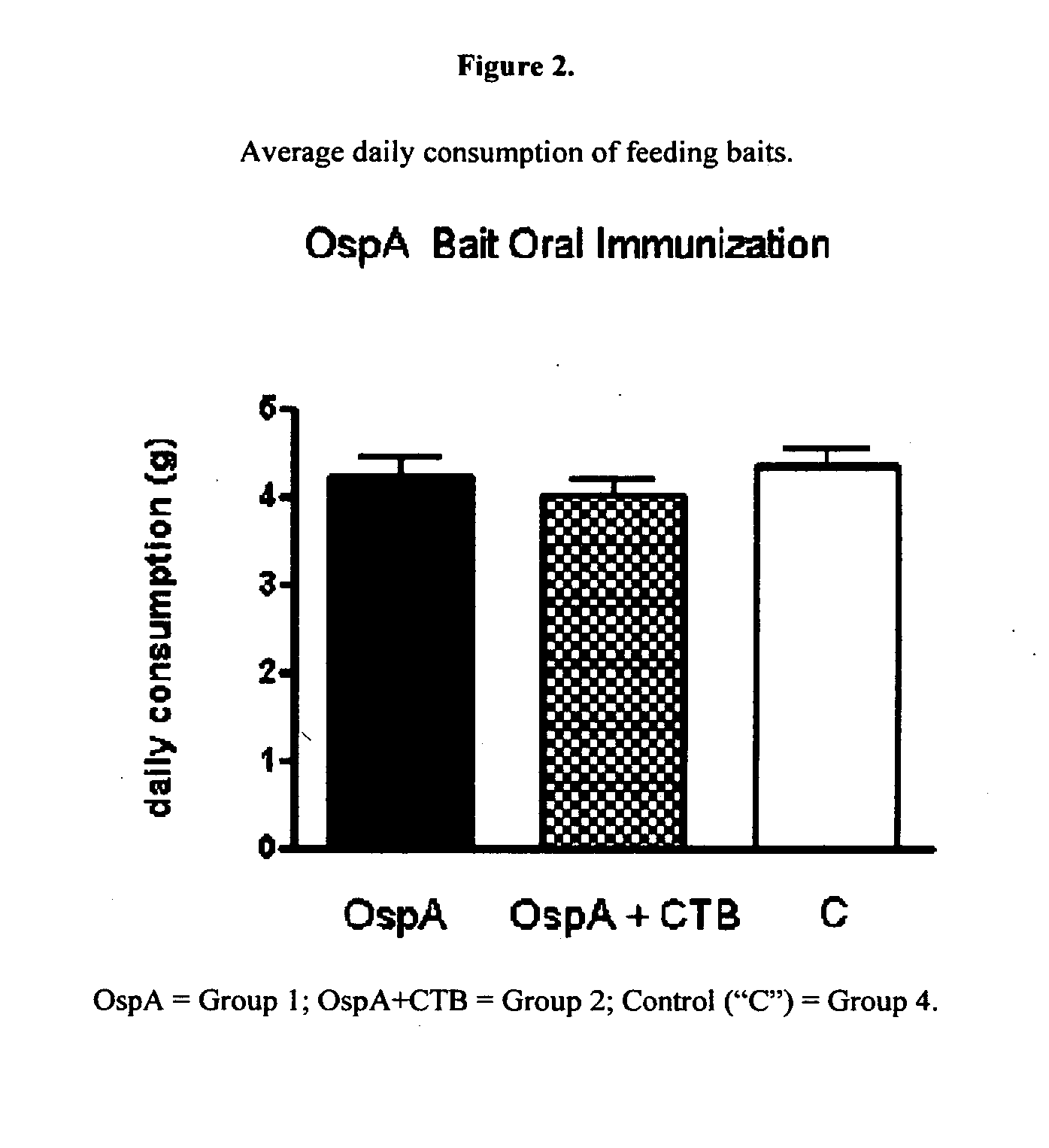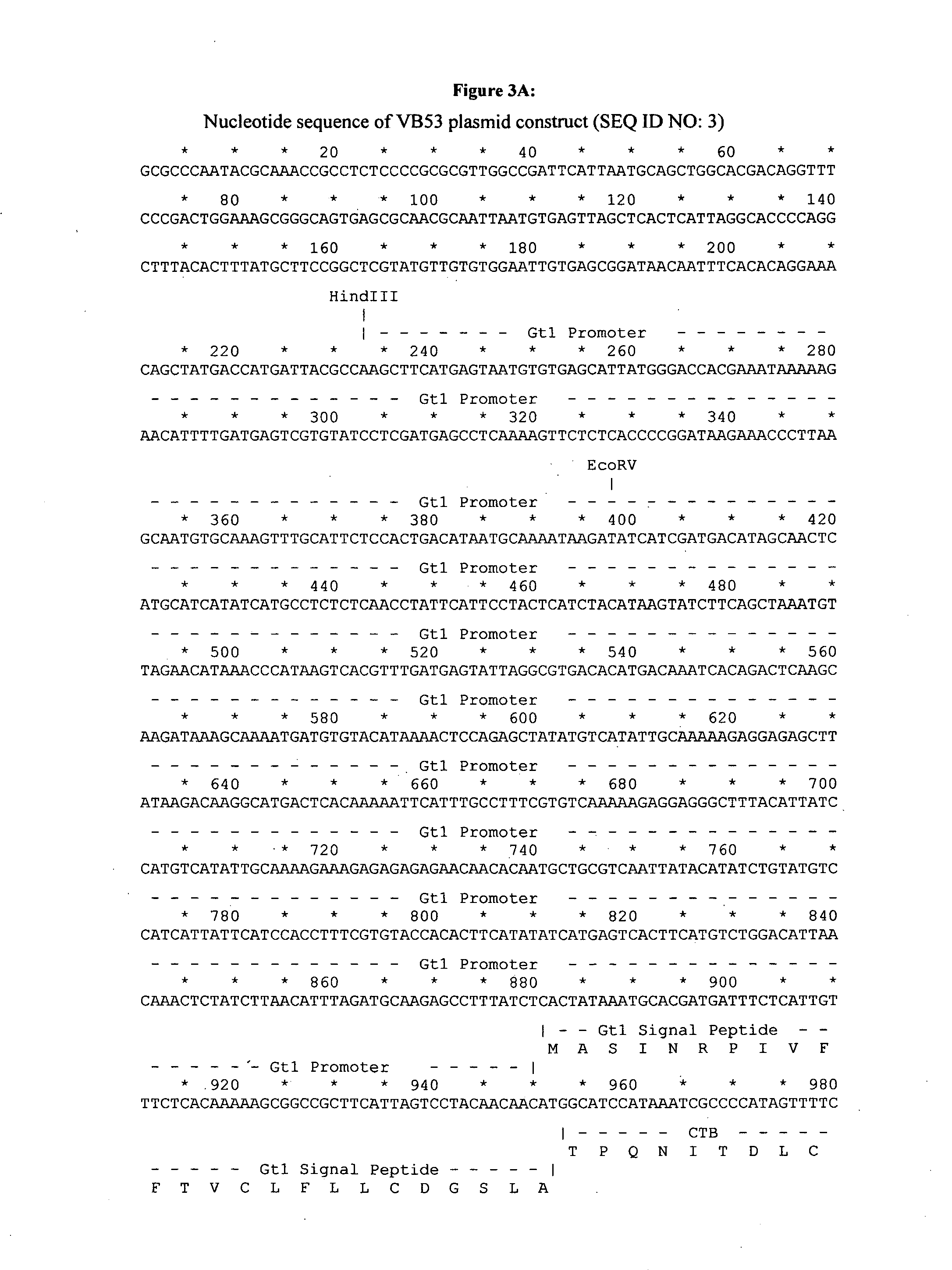OspA Fusion Protein for Vaccination against Lyme Disease
- Summary
- Abstract
- Description
- Claims
- Application Information
AI Technical Summary
Benefits of technology
Problems solved by technology
Method used
Image
Examples
example 1
Production of OspA Rice Grain
[0158]Field-grown homozygous lines which expressed high levels of rOspA were obtained. A total of 3350 grams of pure stock seed was produced. To obtain additional grains that stably express high levels of rOspA, the transgenic lines were grown in a summer nursery in Kansas and in a winter nursery in the US Virgin Islands. Table 1 shows line selection and grain production from the harvest of the latest seasons (2009 and 2010 summer season, Junction City, Kans.). Based on comparisons to known standards, the OspA expression level is estimated to be about 1 g / kg rice flour. The estimated expression level of each event and over two years of growth is shown in Table 1.
TABLE 1Line selection and production of transgenicrice grain expressing OspA.Panicle / GrainOspA ExpEventsSeasonPlants(lb)(g / kg flour)VB15-52009509.6~1 g / kg201050592~1 g / kgVB15-111200950400~1 g / kg201050381~1 g / kgExp = expression measured based on gel analysis
[0159]Over these seasons, a total of 138...
example 2
Expression of Cholera Toxin B Subunit in Rice Grain
[0161]US Patent Application Publication 20110117131 (Huang, et al.), incorporated by reference herein in its entirety, describes the generation of transgenic rice expressing recombinant OspA (rOspA) protein for the use as a vaccine. To date, it remains unclear whether linkage of CTB to OspA produced in plant cells is required to make OspA mucosally active.
[0162]Gene Construct and Transformation—
[0163]To obtain high expression levels of recombinant CTB (rCTB) in rice grains, the mature CTB protein amino acid sequence (UniProt accession number P01556) was back-translated into a nucleotide sequence with the codons optimized towards the codon-usage preference of rice genes, while the internal repeats and other features that might affect mRNA stability or translation efficiency were not altered. The entire nucleotide sequence was synthesized by the company DNA2.0, and then ligated in frame into a backbone plasmid vector called pAPI405, w...
example 3
Immunogenicity of Rice rOspA in C3H / HeJ Mice
[0170]C3H / HeJ mice, a strain that is highly susceptible to B. burgdorferi infection, were used for all immunizations. The rOspA immunogen was purified from rice. The antigen in PBS was prepared with an equal volume of alum adjuvant (Imject, Pierce) to yield a vaccine with 12.5 mg of rOspA per 100 ml dose, delivered intraperitoneally. A primary immunization was given, followed by two booster immunizations. A commercially available canine OspA vaccine (Recombitek Lyme, Merial) was used as a positive control at the same immunizing doses as per the manufacturer's instructions. Blood samples for serum preparation were collected by facial artery / vein plexus bleeding using a 5-mm lancet while mice were under isoflurane anesthesia. The ability of mice to produce anti-OspA antibody was determined by immunoblot using whole cell antigen of B. burgdorferi strain B31 (Viramed Biotech AG, Germany). Mouse antibodies that bound B. burgdorferi antigens wer...
PUM
| Property | Measurement | Unit |
|---|---|---|
| Fraction | aaaaa | aaaaa |
| Mass | aaaaa | aaaaa |
| Mass | aaaaa | aaaaa |
Abstract
Description
Claims
Application Information
 Login to View More
Login to View More - R&D
- Intellectual Property
- Life Sciences
- Materials
- Tech Scout
- Unparalleled Data Quality
- Higher Quality Content
- 60% Fewer Hallucinations
Browse by: Latest US Patents, China's latest patents, Technical Efficacy Thesaurus, Application Domain, Technology Topic, Popular Technical Reports.
© 2025 PatSnap. All rights reserved.Legal|Privacy policy|Modern Slavery Act Transparency Statement|Sitemap|About US| Contact US: help@patsnap.com



